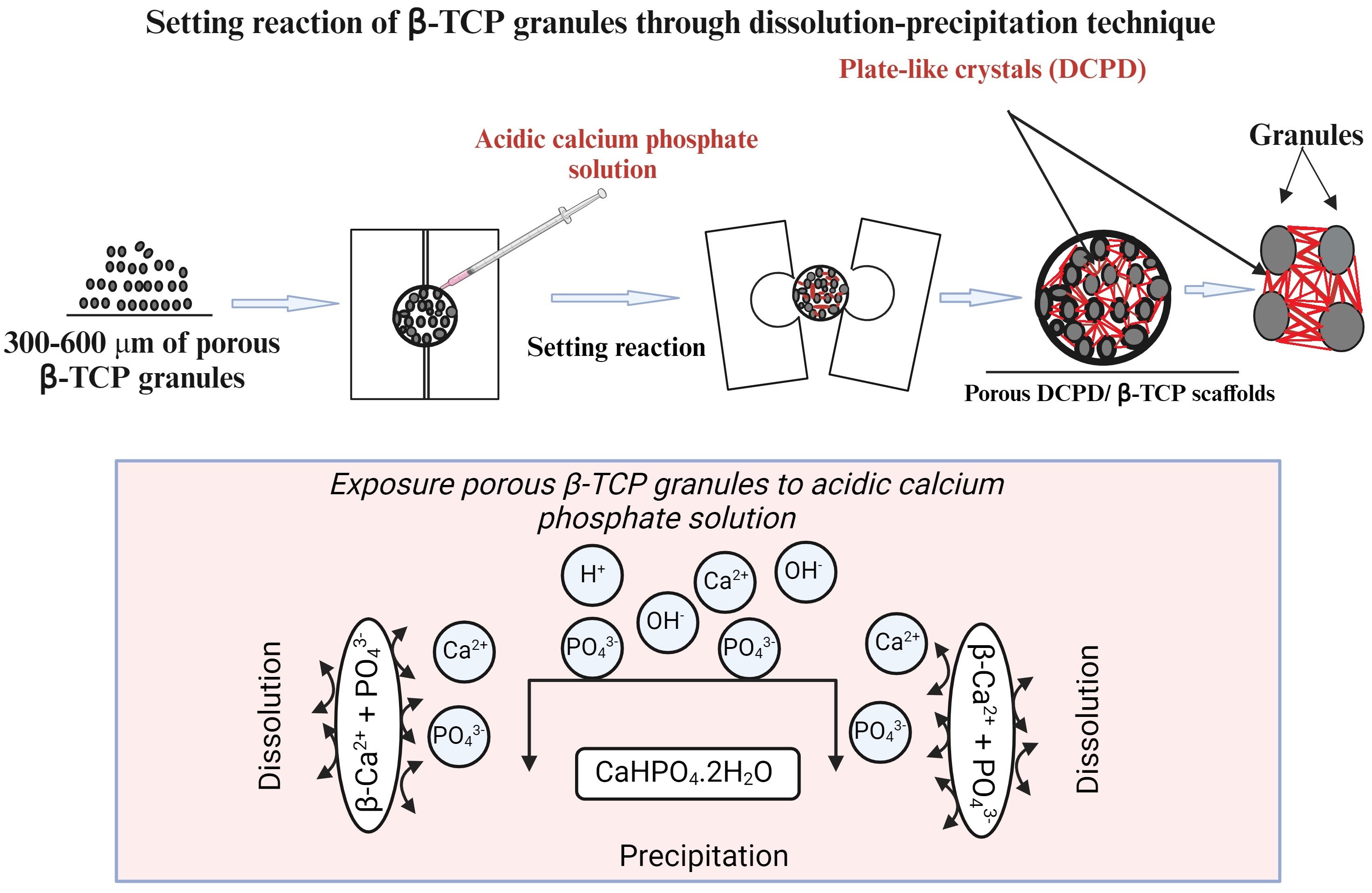Thu, Dec 18, 2025
[Archive]
Volume 20, Issue 4 (December 2023)
IJMSE 2023, 20(4): 1-10 |
Back to browse issues page
Download citation:
BibTeX | RIS | EndNote | Medlars | ProCite | Reference Manager | RefWorks
Send citation to:



BibTeX | RIS | EndNote | Medlars | ProCite | Reference Manager | RefWorks
Send citation to:
Mohammed A H M, bin Shariff K A, Abu Bakar M H. Fabrication of Macro- AND Micropore Forming DCPD/ β-TCP Porous Scaffolds: Effect of Setting-Time Reaction and Acidic Calcium Phosphate Solution. IJMSE 2023; 20 (4) :1-10
URL: http://ijmse.iust.ac.ir/article-1-3402-en.html
URL: http://ijmse.iust.ac.ir/article-1-3402-en.html
Abstract: (16436 Views)
The coated β-tricalcium phosphate (β-TCP) with dicalcium phosphate dihydrate (DCPD) has attracted much attention in the biomaterials field due to the increase in its osteoconductivity. Besides, the porous bioceramic scaffolds with controlled pore sizes are significant in stimulating bone-like cell activity. In this study, the effect of the setting-time process and acidic-calcium phosphate (CaP) concentrations on the fabrication and properties of porous DCPD/ β-TCP scaffolds were studied. Subsequently, the specimens were examined using X-ray diffraction (XRD), scanning electron microscopy (SEM), compression strength and Fourier transforms infrared (FTIR). The study results revealed that the porous DCPD/ β-TCP scaffolds with macro- and micropore sizes were successfully obtained after the 300-600 µm of porous β-TCP granules were exposed to an acidic-CaP solution. Furthermore, the setting-time process and acidic-CaP concentrations increased the DCPD interlocking between granules, and the mechanical strengths of scaffolds increased up to 0.5 MPa. Meanwhile, the porosity levels were changed based on the formation of DCPD crystals. This study was expected to provide novel insights to researchers in the field of bioceramics through its investigation on the creation of porous DCPD/ β-TCP scaffolds.
Type of Study: Research Paper |
Subject:
Biomaterials
Send email to the article author
| Rights and permissions | |
 |
This work is licensed under a Creative Commons Attribution-NonCommercial 4.0 International License. |








